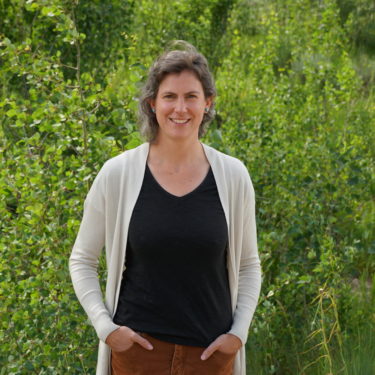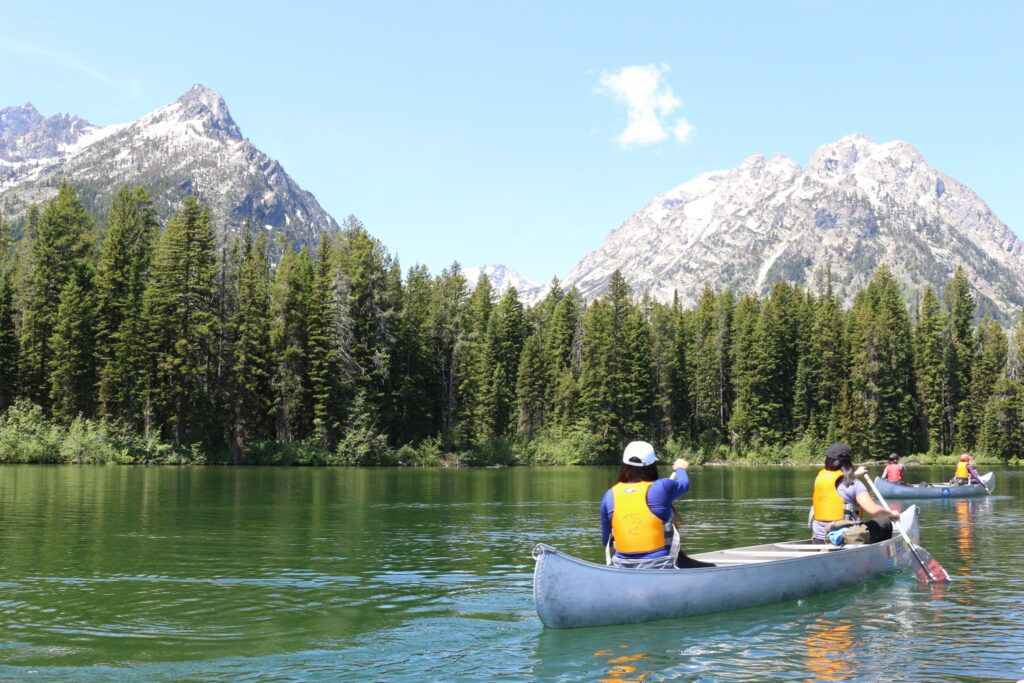“Practitioners within outdoor education, higher education, early childhood settings, and classroom teachers at any grade level can benefit from what the Symposium has to offer. Just bring your own lens and your own inquiry and you’re sure to find something of value that applies to your context.” – Naomi Heindel, TSS Science Working Group
Register for the Place-Based Symposium
As TSS prepares to welcome more than 500 attendees at our annual Place-Based Education Symposium, we wanted to invite you into a conversation with one of the Symposium’s original architects, Head of Field Education Naomi Heindel. Naomi manages residential place-based outdoor science programs in Grand Teton and Yellowstone National Parks and surrounding public lands. An environmental scientist by training, Naomi became an educator by practice through her years as a field instructor with NatureBridge, an environmental education program based in Yosemite National Park.
Enjoy what Naomi had to share about how the event has evolved from an internal TSS event to an opportunity for leaders worldwide to share the innovative teaching and learning happening around the globe. And, if you haven’t already, don’t forget to register for this year’s Place-Based Symposium! Attendance is free at this virtual event.

- Naomi, what’s your one-sentence definition of place-based education (PBE)?
It’s teaching and learning that is rooted in the landscape and surrounding communities. - Can you share the story of how the Place-Based Symposium came about?
During an end of season debrief with instructors and AmeriCorps members that I was helping facilitate, the teaching team shared that while it was great to get a sense of the creative and high-quality educational programming happening within their team, they didn’t feel like they had time to share beyond their team or get a window into what educators in other parts of the organization (like Mountain Academy faculty) were doing. I brought what they had shared to the TSS Science Committee, of which I was a member, and proposed that we create some kind of event to share the innovative teaching and learning happening around the organization. Internal grant funding helped get the first two Symposia up and running, which included presenters and participants almost entirely from within the TSS community.
- How deep into PBE do educators need to be in order to benefit from participating in the Symposium?
This event is relevant to a huge spectrum of educators. Practitioners within outdoor education, higher education, early childhood settings, and classroom teachers at any grade level can benefit from what the Symposium has to offer. Just bring your own lens and your own inquiry and you’re sure to find something of value that applies to your context. Presenters at the Symposium represent a large spectrum of points along the educational career journey. AmeriCorps members, graduate students, new teachers, veteran teachers, and university professors are all presenters. This is not an academic conference, but rather an opportunity for educators to share how they are bringing place-based education to life in meaningful and transformative ways. - What are you most looking forward to at this year’s Symposium?
I’m excited about the energy this event creates, both in my role within the planning team and also within the larger TSS community. I’m looking forward to the keynote speaker, Dr. Carolyn Finney. And I’m personally excited about the presentations from AmeriCorps members who have been serving our community remotely during COVID. One of the themes this year is “Empowering Young Leaders,” and I’m looking forward to seeing what emerges from that.
- This year’s keynote speaker, Dr. Carolyn Finney, has many accolades to her name and it’s an honor to have her as part of this event. In her work and writings, Dr. Finney spotlights what she terms “the legacy of contradictions” in the U.S. Here’s one case in point from her recent essay “Self-Evident”: “the Homestead Act of 1862 provided the opportunity for European immigrants to own land and build a home while Black people were being held as slaves and Native people were being pushed off the land.” What role do you see PBE playing in the work of anti-racism and developing greater cultural competency within environmental and educational organizations?
Three things come to mind. First, when we think about place-based education, we’re talking about places (or landscapes plus communities), and in this country, there is not a single landscape that was not Native land. We need to tell the stories of these places in the truest way possible. Second, so much of the PBE we’re doing at TSS involves going outside, and there is great power in being in the field with racially diverse groups of students. This connects to Dr. Finney’s work of raising the visibility of Black people in the outdoors. There are aspects of solidarity, protest, access, and joy to this work and we have a responsibility as an organization that brings kids outside to do so in an equitable way. Third, I think of the science aspect. A big part of PBE within field education programs is outdoor science. Who do we picture when we think of a scientist? What kinds of scientific knowledge do we elevate? What harm has science and the scientific community done against communities of color? We need to grapple with these questions.
- On a different but related note, a deep thread of addressing environmental issues runs through Dr. Finney’s work. While PBE and environmental education are not interchangeable terms, PBE certainly speaks to environmental sustainability. Where do you see connections between PBE and environmental stewardship?
Studying place is one entry point into the larger work of moving toward environmental sustainability. Take climate change, or any other major environmental issue we’re facing, and you can access it through the lens of place. And perhaps viewing a large and complex issue by way of its impact on a particular place brings it down to a human-sized scale that helps us envision and work toward solutions. The shared end goal of both PBE and environmental education needs to be a holistic vision for sustainability.See you at the Symposium for more inspiration and learning together!


